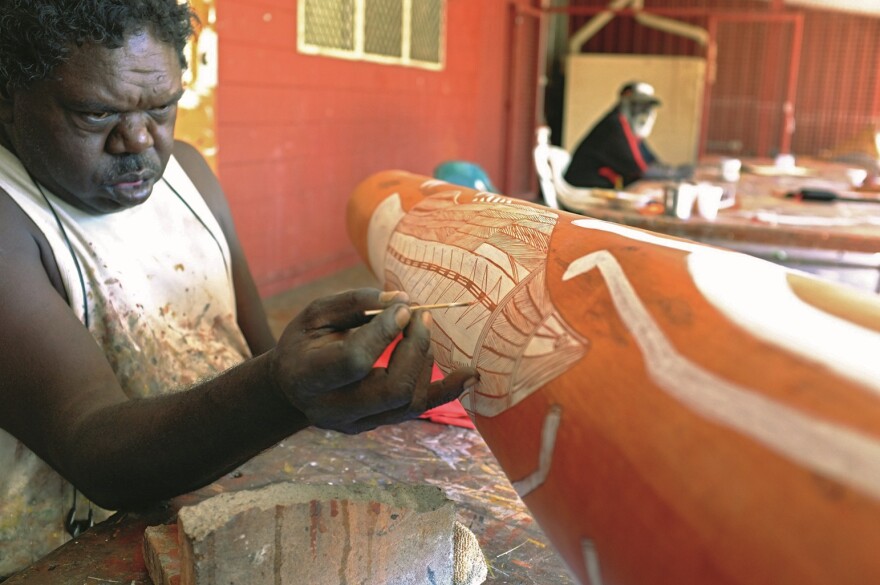The homeland of about 12,000 aboriginal people in Australia is more than 10,000 miles from Virginia, but this week at five different locations in Charlottesville, more than 200 works by Australia’s top indigenous artists will be on display.
The art of Australia’s native people is as old and mysterious to other cultures as its music, and both will be featured at 2 p.m. Saturday in UVA's Fralin Museum of Art. That’s where 112 painted wooden poles now stand – some of them 14 feet tall, weighing more than 200 pounds.
“These are all from the stone country," says curator Henry Skerrett. "There are these incredible escarpments which break out to these sweeping flood plains, ending on the sandy beaches of Northeast Arnhem Land, which are probably the most beautiful beaches in the world and, I suspect, would be tourists meccas if they weren’t full of crocodiles. It has one of the highest concentrations of rock art in the world, dating back conservatively 50,000 years.”
On the death of a loved one, those rock paintings inspired indigenous artists. They would search for a eucalyptis tree that had been hollowed out by termites. Smaller ones were made into wind instruments known as digeridoos, but Skerritt says larger trees were cut down and decorated for the dead.
“When somebody died, there’d be a great big funeral," Skerritt explains. "Their bodies would be painted with ancestral clan designs, and then they’d be laid out on a rock crevice or in a tree or in a specially made shelter. Once the body had decayed, the bones would be carried around by their loved ones for months. When the grieving process was finished, the bones would be placed in a hollow log coffin, and the coffin would be painted with powerful designs – designs that would tell about who the person was, who their ancestors were, that the soul had returned to its ancestral place to be reborn.”
But why would these striking works of art come to Charlottesville? It turns out North America’s only museum dedicated to Australian aboriginal art is here – founded by local business tycoon John Kluge who first saw native art at a show in New York and was smitten. He traveled to Australia in 1989 and started buying art. Back in the States, he acquired the collection of a college professor from Kansas – Ed Ruhe.
Today, the University of Virginia owns the Kluge-Ruhe Aboriginal Center, operating a gallery with limited room for exhibitions of about 30 works -- too small for 14-foot memorial poles. Which is why – for several years – Skerritt has been planning a very big show all over town.
“Charlottesville really is the epicenter of indigenous Australian art in the United States, and so in the next few weeks, there are exhibitions opening in Thomas Jefferson’s Rotunda, there is an exhibition opening at Second Street Gallery downtown, at New City Arts and, of course, at Kluge Ruhe," he says.

Two modern aboriginal artists – Gabriel Maralngurra and Joe Guymala are also here to talk about their work, their culture and their homeland in the far northeast corner of Australia. Maralngurra says they have been spared the horrific fires in other parts of the country because they do controlled burns each year.
“We look after the land. We burn the land, but down south it was never managed properly.”
But as part of this show, which runs through March at the Fralin Museum of Art, Kluge-Ruhe will offer opportunities on its website to donate money for fire victims as well as indigenous people and Australian wildlife. In Charlottesville, I’m Sandy Hausman.


